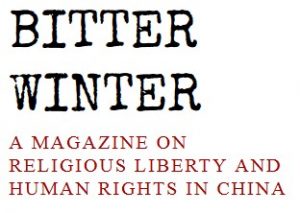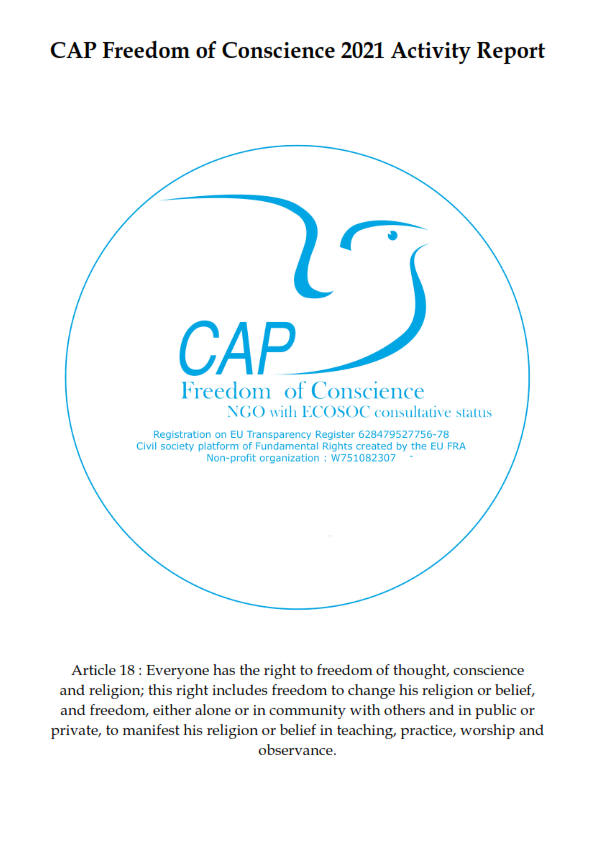 In 2019, the world celebrates the 30th anniversary of the Tiananmen Square Protest of 1989. Few, however, realize that what happened then determined the fate of religion in China in the next 30 years.
In 2019, the world celebrates the 30th anniversary of the Tiananmen Square Protest of 1989. Few, however, realize that what happened then determined the fate of religion in China in the next 30 years.
We expect a plethora of celebrations for the 30th anniversary of the Tiananmen Square Protest, mostly known in China as the June Fourth Incident (六四事件). Starting on April 15, 1989, students and other protesters gathered in Tiananmen Square in Beijing, calling for freedom of speech and democracy. Scholars believe the students involved were roughly one million, as parallel protests also developed in hundreds of Chinese cities. The CCP got extremely scared of the protests, particularly because parallel movements in Europe were destroying the Soviet Union and other Communist regimes. Although often hailed in the West as a “moderate,” CCP leader Deng Xiaoping (1904–1997) ordered the military suppression of the protest. Tension escalated until, on June 3-4, 1989, the troops opened fire on the students. How many of the latter died is a matter of contention among historians. The U.S. government’s estimate was about 10,000, while the CCP maintains that only a few hundred students died, together with 23 police officers and soldiers.
In the West, scholars have long discussed the causes of the protest. The prevailing academic interpretation is that the economic reforms of Deng generated the illusion that everybody may become rich, and unrealistic expectations that a capitalist economy would lead to a democratization of China. Widespread corruption concentrated the richness in the hands of a minority, and no democratization followed, leading intellectuals and students to protest. Scholars also acknowledge that what was happening in Soviet Russia and Eastern Europe played a role, although how important this factor was is a matter of debate.
General accounts of Tiananmen tend to focus on the economic factors and the pro-democracy movement. Few acknowledge the crucial links between Tiananmen and religion, and there is a risk they will go missing in the 30th-anniversary celebrations, although solid scholarly works on these connections now exist.
The links are of three different kinds. First, some of the students were house church Protestants, although the exact percentage of Christians among the protesters is unknown and may have been exaggerated by both CCP and Western Christian sources.
Second, and much more important, it is generally acknowledged that Tiananmen was a powerful factor in generating a revival in the house church movement. Deng’s reforms came after the horrors of the Cultural Revolution and, to some extent, were looked at with hope by many Chinese. However, the brutal repression of Tiananmen persuaded many, if not most, that the CCP was incorrigible. As a result, many disillusioned with the Party ideology looked for comfort and answers in Christianity, mostly of the house church variety. The post-Tiananmen revival was also the contest for the emergence of new Christian religious movements, including The Church of Almighty God, which grew to become the largest Chinese new religious movement together with Falun Gong.
The third religion-related consequence of Tiananmen was that it fueled a paranoid fear of religion among CCP leaders. The extent of this paranoia can be understood only by considering the international context. For CCP leaders, that the Soviet Union and its satellite states may collapse, with some formerly socialist countries joining NATO and the European Union, was something unexpected and regarded as unthinkable until a few years before Tiananmen. As reported by Chan Kim-Kwong and Eric Carlson, the CCP dispatched its best scholars to Eastern Europe to understand how all this might have been possible, and report back to Beijing (Religious Freedom in China: Policy, Administration, and Regulation. A Research Handbook, Santa Barbara, CA: The Institute for the Study of American Religion, 2005, 19). They concluded that religion had been the single most important factor in mobilizing the masses against the Communist Parties in several Eastern European countries—a theory shared by several Western scholars, although by no means by all. As discussed at length by Carsten T. Vala in his The Politics of Protestant Churches and the Party State in China: God Above Party? (London and New York: Routledge, 2018), CCP scholar Gong Xuezeng would later report in 2003 (in the book Socialism and Religion) that the findings of the scholars dispatched to Europe had become mandatory reading for all cadres at the Central CCP School.
In short, the new generation of CCP leaders, those who would eventually lead China in the 21st century, grew up being taught that the Communist system in the Soviet Union and its satellite countries had collapsed mostly because of religion, and that control and repression of religion was mandatory for China to avoid following the same fate. As Carsten Vala noted, speeches on religion by Jiang Zemin, who came to power as CCP secretary twenty days after Tiananmen and continued in its position until 2002, looked very much like Chairman Mao’s early pronouncements. And an influential ideologue of the early Jiang years, Chen Yun, kept telling the CCP that the United States was using religion to destroy Communism in China as they had successfully done in the Soviet Union, Poland, Afghanistan, and elsewhere in the previous decades.
The immediate outcome of these fears were the repression of Uyghurs in Xinjiang, the increasing pressure on Tibetan Buddhists and an international smear campaign against the Dalai Lama, stricter control and harassment of house churches, the publication of an official list of groups labeled as xie jiao (heterodox teachings) and regarded as so dangerous that they should be completely banned and mercilessly persecuted in 1995 (including The Church of Almighty God), and Jiang’s clash with Falun Gong and its inclusion in the same list of xie jiao in 1999.
Tiananmen alone did not determine this policy, but Tiananmen together with the CCP’s interpretation of the collapse of Communism in Eastern Europe (and the events in Afghanistan) did. Whatever the interpretation of Tiananmen by Western scholars, the CCP never believed it was a purely Chinese or spontaneous phenomenon. It interpreted Tiananmen as the Chinese chapter of an epic struggle between “the West” (led by the United States) and Communism, where the West had succeeded in destroying the Soviet Union and the Communist regimes in Eastern Europe, and China resisted as the only remaining mighty fortress of Marxism. The CCP also believed that the West’s main tool in this cosmic battle was religion, and that, without further cracking down on religion, China would share the fate of the Soviet Union and succumb.
It is not important whether this interpretation of Tiananmen was true—most Western scholars would say it wasn’t. It is much more important that the CCP fervently believed in it, and acted as if it was true. Leaders such as Xi Jinping were formed in courses and classrooms where this reading of the events of 1989 was taught as dogma.
For CCP, nothing is more important than preserving the power of CCP. While some may only be concerned about their personal power and privileges, for true believers ideology is a form of an atheistic religion, and saving the CCP means saving the whole universe. They learned from Chairman Mao that how many human lives are sacrificed to this aim is not important. And they learned from their own interpretation of the events of 1989 and Tiananmen that saving the CCP meant cracking down on religions—containing some religions~ and destroying others. The liberty and lives of countless Uyghurs and other Muslims, Tibetan Buddhists, house church Christians, Catholics hostile to CCP, members of Falun Gong, of The Church of Almighty God and other xie jiao, and many others, did not count. The same executioners that killed (according to the most believable count) 10,000 protesters in Tiananmen Square in 1989 went on to arrest, torture, and kill millions of believers in the subsequent decades, persuaded that their lives were expendable for the greater goal of saving Chinese Communist power from the “evil” power of religion that had shown its ugly head in Tiananmen Square and had destroyed Communism in the Soviet Union and elsewhere.


